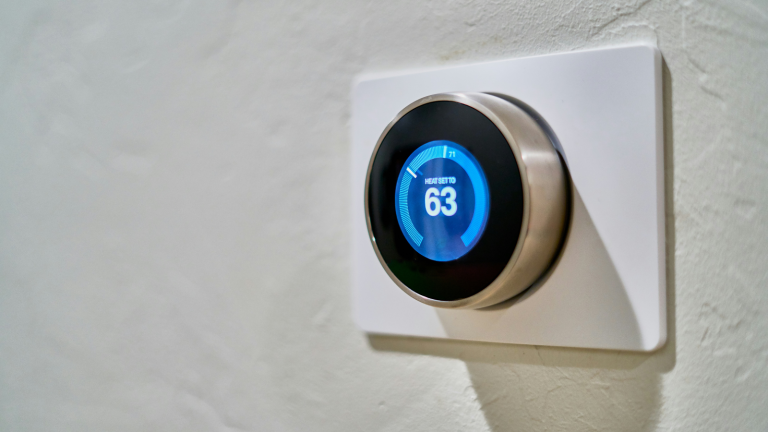Photo by Dan LeFebvre on Unsplash
Opinions expressed by Digital Journal contributors are their own.
The smart trend is no longer reserved for luxury homes or future updates. Instead, consumers are shopping for homes with existing smart home tech already built in. New tech for the home is becoming more prevalent, with gadgets for every room on the market.
As we approach the second half of 2024, smart home technology will continue to evolve, introducing breakthrough technologies that will make life easier, safer, and more energy-efficient.
In this article, we take a closer look at the latest advancements in smart home technology and predict how these innovations will impact our living environments in the near future.
Integration
One of the key trends in smart homes is the increased integration of smart home technology. As mentioned above, this is becoming an expectation rather than a luxury, and as expectations grow, so too does connectivity and ease of use.
On the integration front, more smart home gadgets are starting to connect with each other — for example, you'll likely have Google Home speakers in many rooms of your house that can function as a group rather than as individual units.
The smart lighting system can manage all your lighting, including your Modern Mirrors bedroom vanity, and follow the exact routine you set to turn lights on and off throughout your home based on your schedule and needs.
If your smart fridge senses you're low on cheese, it will add it to your Amazon Alexa shopping list. Connectivity is essential to expanding your smart home system.
Touchless Technology
This trend has already begun to spread across the smart home industry: Touchless hand sanitizer dispensers are common sights in retail stores, and while they're unlikely to be smart, the potential is there, and the touchless concept is catching on.
For example, touchless doorbells are a new invention that allow visitors to announce their presence without touching common surfaces that could transmit germs. Many household gadgets are managed by smartphone apps, so each person who controls them simply touches their smartphone rather than physically interacting with the item.
Artificial Intelligence and the Internet of Things
Thanks to voice assistants like Amazon Alexa and Siri, most people are familiar with certain pieces of AI functionality. Artificial intelligence is evolving to better understand commands and respond in more meaningful ways. AI in the smart home allows people to play music, update to-do lists, turn lights on and off, and perform a variety of other tasks.
While the Internet of Things (essentially connecting everything in the world to the Internet) is still a difficult concept to grasp, advances in the smart home world regarding IoT will have a huge impact on making our lives easier, especially in smart bathrooms and smart kitchens.
Enhanced security
Security is a key priority for smart homes, and in 2024, powerful facial recognition and motion sensor systems will become available, enabling the system to identify occupants, visitors and intruders, improving security while maintaining privacy.
Smart residential security systems are designed to protect the outdoors while also securing the smart home technology inside the home, which is increasingly networked together to monitor and control your home remotely from anywhere.
Improved connectivity
One of the essential requirements for the smart home of the future is mesh Wi-Fi high-speed Internet access. Mesh Wi-Fi connects your main router directly to the well, eliminating dead zones and slow connections far from the network. Every other smart home device you install will then be connected to the high-speed network throughout your home.
Smart Thermostat
One of the most popular smart home technology devices is the smart thermostat, which is fully customizable to your preferred temperature and schedule, extremely easy to install, and allows remote access to control your home environment.
Not only are smart thermostats environmentally friendly because they allow you to easily turn heating or cooling on and off while you're away, they're also touted as cost-effective because they cut down on your energy bills.
Health Tech
This trend has also created a trend where many smart home technology companies have started to focus on this field. As mentioned above, one of the most popular smart technology devices is the smart thermostat. However, some models also come with other features such as standalone humidity sensors and humidity sensors to improve air quality.
Air conditioners and smart air purifiers are becoming increasingly popular, helping to maintain and improve air quality, while some smart doorbells even have built-in temperature measuring devices, allowing homeowners to check for one of the most basic signs of COVID-19 before letting visitors into their home.
Unrelated to COVID-19, but still useful, smart water filtration devices can promote general health. Smart toilets go far beyond standard models: Using sensors to analyze feces and skin, these advanced models can provide health information or alert users to potential problems so they can seek professional help before things get worse.
Privacy Features
Smart home technology has been plagued by data leaks and security flaws. To meet the needs of today's smart customers, companies are developing features to ensure that users of these devices' information and their private lives at home are safe.
Sustainable Living
Smart homes are becoming more environmentally friendly. Upcoming developments include smart thermostats, energy-efficient appliances, and solar power systems. These solutions will not only minimize your carbon impact but also significantly reduce your energy bills.
Customizable living space
More than just technological advancements, smart homes also enable personalized living experiences: occupants can easily customize their living spaces to suit their changing needs and preferences, thanks to modern architecture and smart materials.
Smart City Integration
Smart houses don't exist in isolation: they connect with the larger infrastructure of smart cities, exchanging data to improve traffic flows, energy consumption and emergency response times, making urban life more connected and efficient.

